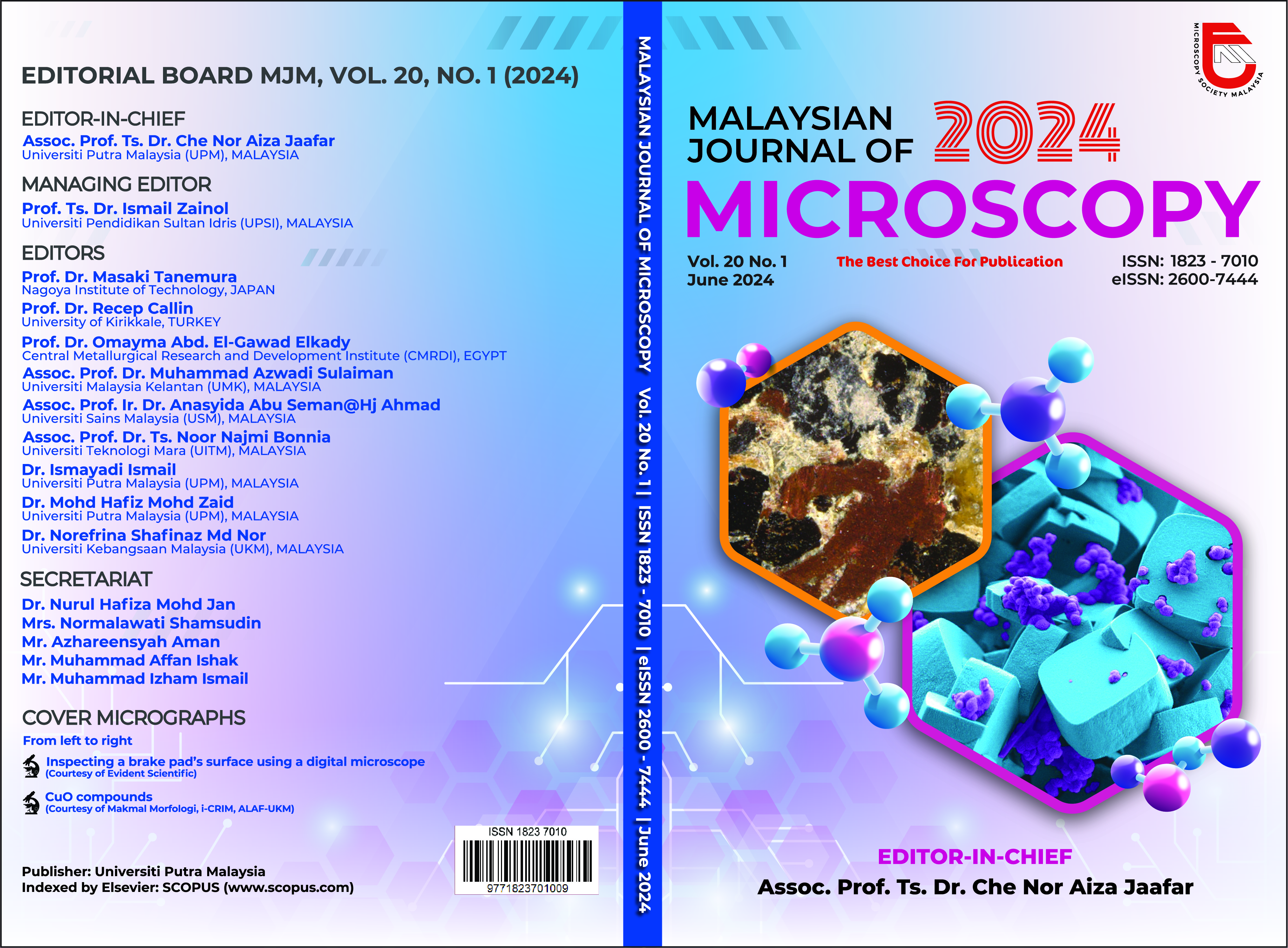THE EFFECT OF ECO-FRIENDLY CHEMICAL TREATMENT ON MECHANICAL PROPERTIES OF PINEAPPLE LEAF FIBRE USING WEIBULL ANALYSIS
Abstract
In the pursuit of eco-friendly composite materials, pineapple leaf fibre (PALF) emerges as a compelling candidate to be used as a degradable reinforcing material due to its outstanding intrinsic mechanical properties. However, due to their hydrophilic nature, alkaline treatment using sodium hydroxide (NaOH) is often used to improve interface bonding in the polymer matrix. Though, NaOH, can pose environmental risks if not handled with proper precautions during disposal. Thus, opting for sodium bicarbonate (NaHCO3) could be regarded as an eco-friendly alternative. The aim of this study is to analyse the impact of various treatment processes on the strength and Young's modulus of the PALF. The PALF were subjected to an alkaline treatment using different concentrations of sodium bicarbonate (5 wt.% % and 10 wt.%) for 96 hours. Some of the PALF was also pre-treated in hot water (100 °C) for 30 minutes before the alkaline treatment. The tensile single fibre test was carried out using a 20 mm gauge length. Predicted tensile strength and modulus were determined through the utilization of Weibull analysis. Scanning electron microscopy (SEM) was used to analyse the surface morphology of the fibres. The results suggest that the fibres treated with a 5 wt.% NaHCO3 solution at room temperature demonstrates a significant 43 % increase in tensile strength and a 24 % improvement in Young's modulus when compared to their untreated PALF counterparts. In summary, the alkaline treatment enhanced both the tensile and modulus strength of the fibre and NaHCO3 can be considered as an alternative material for eco-friendlier surface treatment for natural fibre.


